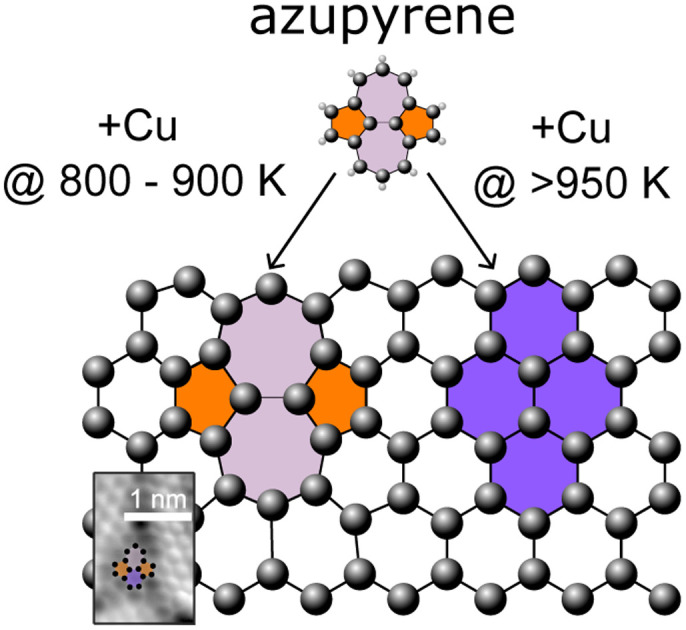
Chemical vapour deposition enables large-domain growth of ideal graphene, yet many applications of graphene require the controlled inclusion of specific defects. We present a one-step chemical vapour deposition procedure aimed at retaining the precursor topology when incorporated into the grown carbonaceous film. When azupyrene, the molecular analogue of the Stone–Wales defect in graphene, is used as a precursor, carbonaceous monolayers with a range of morphologies are produced as a function of the copper substrate growth temperature. The higher the substrate temperature during deposition, the closer the resulting monolayer is to ideal graphene. Analysis, with a set of complementary materials characterisation techniques, reveals morphological changes closely correlated with changes in the atomic adsorption heights, network topology, and concentration of 5-/7-membered carbon rings. The engineered defective carbon monolayers can be transferred to different substrates, potentially enabling applications in nanoelectronics, sensorics, and catalysis. The full paper is available here